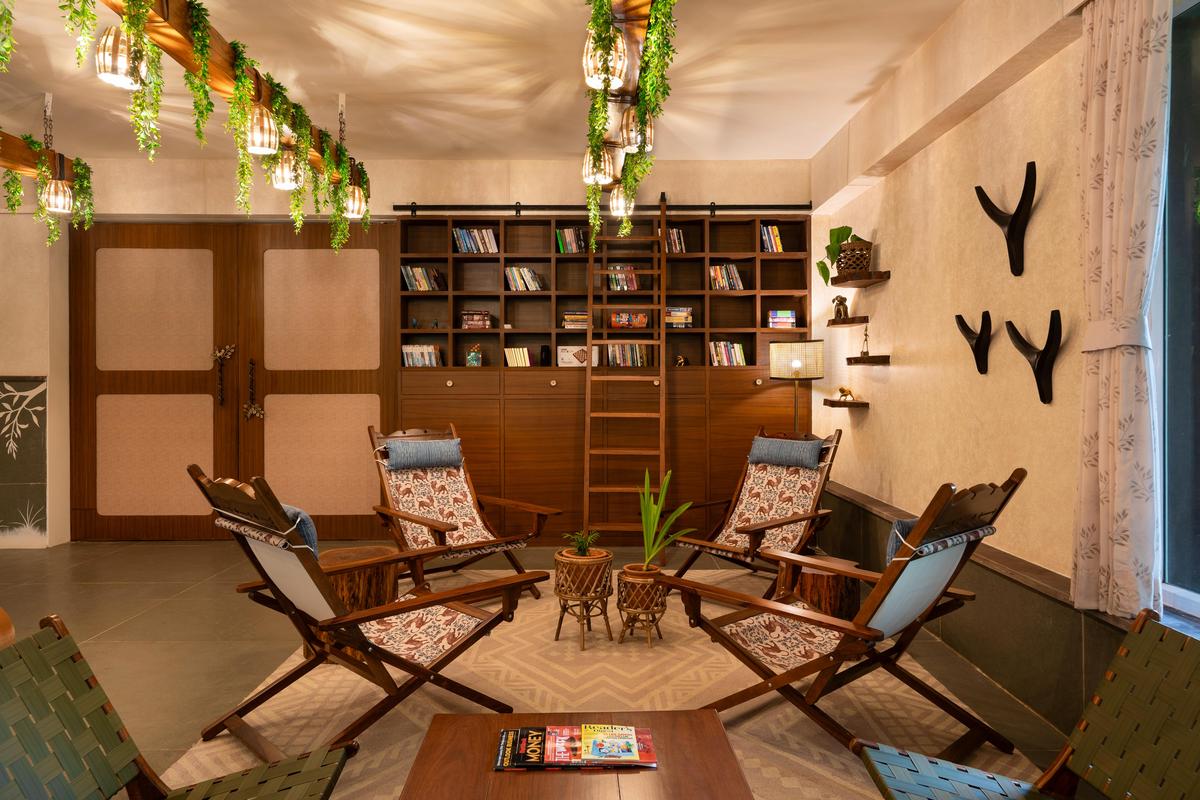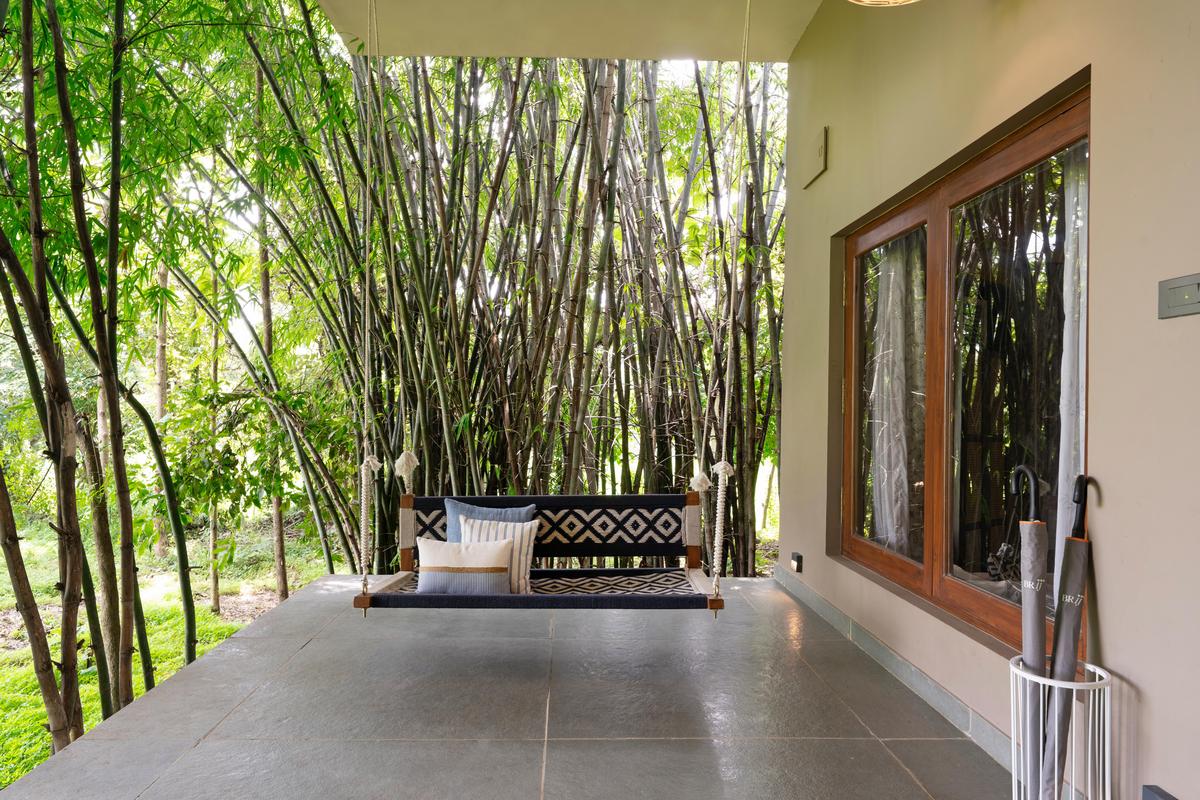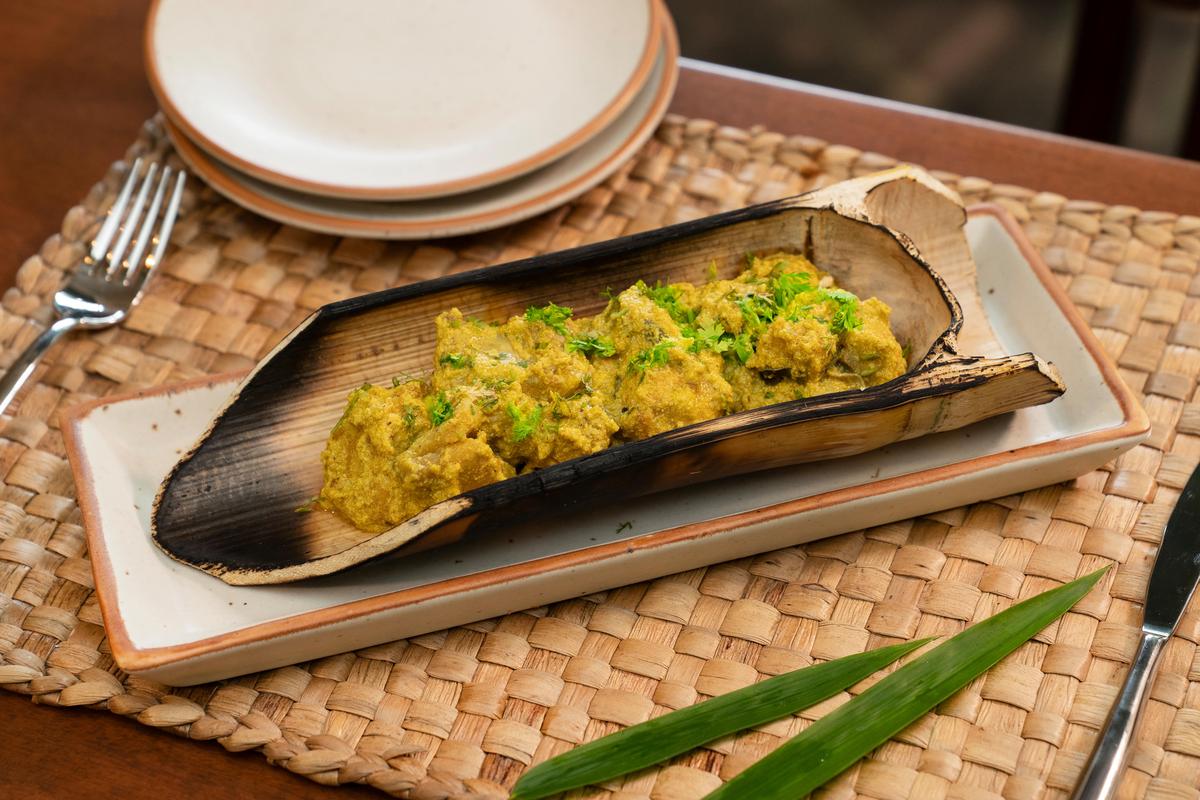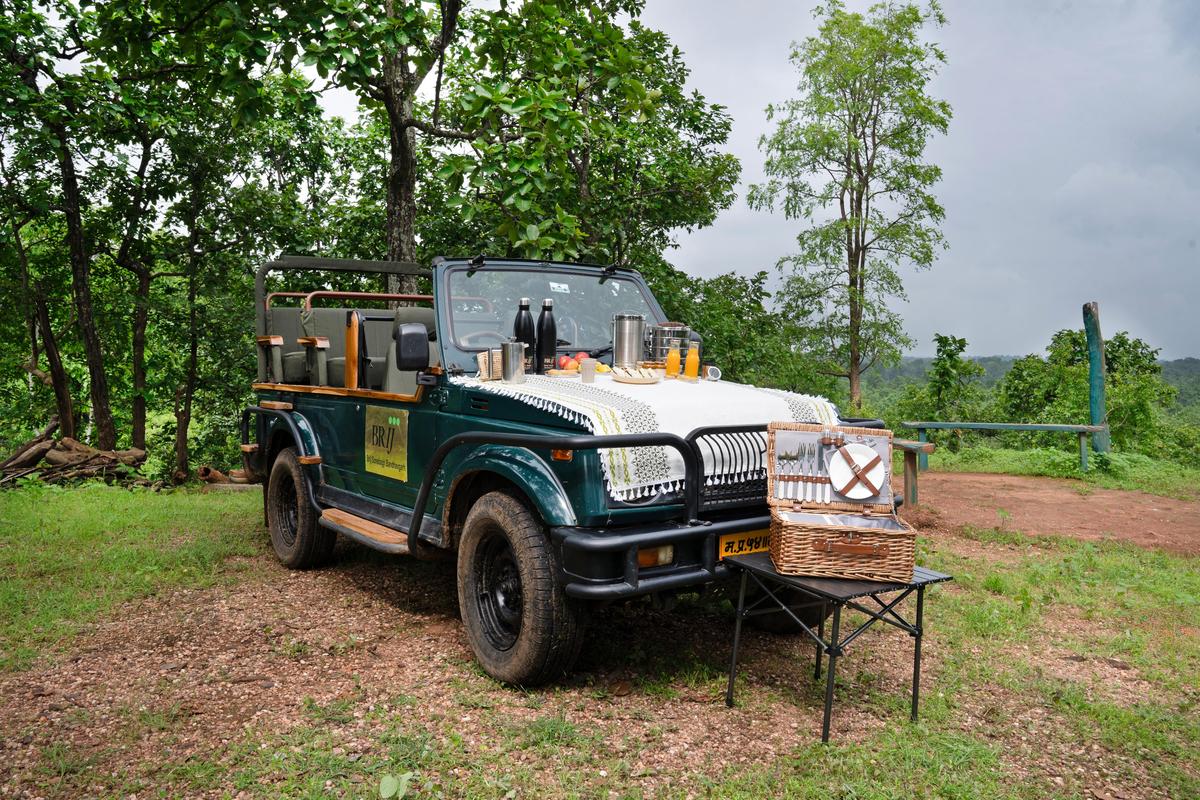
The sounds of the forest deepen; the rustle of bamboo, the rhythmic call of drongos and somewhere ahead, the faint alarm call of a spotted deer. A few turns later, as we round a bend, a tiger appears, reclining beneath a sal tree, its striped flank rising and falling in slow rhythm. For a moment, all sound stills. The forest holds its breath.
I am on a safari at Bandhavgarh, with Guljar Singh, who has been exploring these forests for years. “The forest changes with every rain,” he says as we drive past patches of grassland and sal thickets, the sunlight sifting through layers of green. Bandhavgarh’s core area spans 720 square kilometres, with an additional 816 in the buffer.
We spot the Indian pitta, resplendent in turquoise and orange, hopping across a fallen branch. Jungle owlets blink from their perch and a giant wood spider hangs between two trees, its web glinting like glass. Overhead, a small group of vultures circle lazily in widening spirals. The Tala zone, guide Guljar Singh explains, has become one of Bandhavgarh’s few remaining strongholds for these endangered birds.
A view of the swimming pool at the villa at the Brij Sone Bagh Resort in Bandhavgarh in Madhya Pradesh.
| Photo Credit:
Special Arrangement
The tiger may be the highlight of the trip, but there is plenty to keep me engaged for the rest of my stay at Brij Sone Bagh, the newest retreat by Brij Hotels. Chiefly, the peace. The first thing I notice when I arrive, after driving four hours from Madhya Pradesh’s Jabalpur airport, is the layered sounds of the forest. Cicadas, a distant call of an owl and the rustle of leaves stirred by wind.
“This retreat sits within a natural forest of 32 acres,” says Arvind Bhende, regional development head of Brij Hotels, over glasses of cold, spiced buttermilk. Designed by architect Deepika Sethi of Atelier15, Brij Sone Bagh’s five villas, made of local stone and timber, rest quietly amid old sal and bamboo trees. Pathways curve naturally around the terrain, and gardens merge seamlessly with the forest. “We wanted the design to defer to the land rather than dominate it,” Sethi says.

A view of Brij Sone Bagh Resort in Bandhavgarh in Madhya Pradesh.
| Photo Credit:
SPECIAL ARRANGEMENT
My villa, named Vanar after the langur, features a mix of cane and antique-style wooden furniture, handwoven cottons and textured walls. Small touches reveal the region’s artistic soul: dokra metalwork pieces from neighbouring Chhattisgarh rest on the bedroom walls.

A view of Brij Sone Bagh Resort in Bandhavgarh in Madhya Pradesh.
| Photo Credit:
SPECIAL ARRANGEMENT
I dine beneath an old jamun tree. The cool air carrys the scent of damp soil. A local villager, dressed in traditional attire to honour the serpent god, plays the flute as chef Dharmender Kumar – or Dharma as he is fondly called – tends to an open barbecue nearby. He slowly turns the chicken marinated earlier in the day with turmeric, ginger, garlic and a blend of foraged forest herbs. The aroma of smoke, spice and mahua blooms mingles with the night air.

Bamboo fish
| Photo Credit:
SPECIAL ARRANGEMENT
Dharma also invites me into his kitchen for what he calls a “farm to kadhai” session. He has brought fresh produce from the local market – amla, bunches of coriander and green chillies. With measured ease, he shows me how to prepare amla pickle and a sharp, green chutney, adjusting the flavours by instinct rather than recipe. The chicken we marinate together – wrapped in banana leaves and slow-cooked in bamboo—appears later that evening for dinner, tender and fragrant, tasting of smoke, herbs and rain-washed soil.
Zero-kilometre philosophy
“Almost everything you eat here,” Dharma tells me, “comes from within a few kilometres. That is our zero-kilometre kitchen.” This “zero-kilometre philosophy” lies at the core of Brij Sone Bagh’s ethos. Vegetables come from neighbouring farms, milk from local dairy farmers and grains such as kodo millets and lentils from nearby villages. Even the spices and mahua-based recipes have been sourced through local women’s cooperatives. This approach cuts down food miles, sustains rural livelihoods and gives guests a taste of regional cuisine.
Sustainability initiatives
The retreat’s sustainability extends beyond food. Saahas, an NGO known for its circular waste management, handles dry waste collection and conducts monthly neighbourhood clean-ups along the approach road. Less than five percent of collected waste reaches landfills; the rest is recycled or composted. Organic waste is processed in an on-site goshala, where manure from cattle is used for the soil of the kitchen garden. Water needs are met by the perennial Charan Ganga river that flows nearby.
Jungle safari

Gypsies during morning safari in Bandhavgarh.
| Photo Credit:
SPECIAL ARRANGEMENT

A tiger crosses the road in front the the gypsies
| Photo Credit:
Getty Images

Gypsies going for morning safari in Bandhavgarh in Madhya Pradesh.
| Photo Credit:
SPECIAL ARRANGEMENT
Back to the safari, we pause for breakfast at a designated forest clearing, where chef Dharma and the nature guides lay out warm parathas, fresh fruit and chilled watermelon juice on the hood of our jeep.
Before leaving the Tala zone, we make a brief stop at Sheshshaiya, one of Bandhavgarh’s most remarkable archaeological sites. Located deep within the forest at the base of a moss-covered hill, this ancient sandstone statue of Lord Vishnu reclining on the seven-hooded serpent, Sheshnag, is believed to date back to the 10th century AD. The sculpture is protected by the Archaeological Survey of India and remains a symbol of the region’s layered history.
That evening, I walk to a nearby village where only three families continue the local craft of bamboo weaving. “There used to be more of us,” says Karishma Basoi, deftly splitting a bamboo strip. “Now, only a few make tourist crafts.” Her fingers move with a memory that predates the resort, the tiger reserve, even tourism itself.
The writer was at Brij Sone Bagh in Bandhavgarh on invitation by Brij Hotels.
Published – November 27, 2025 11:10 am IST





